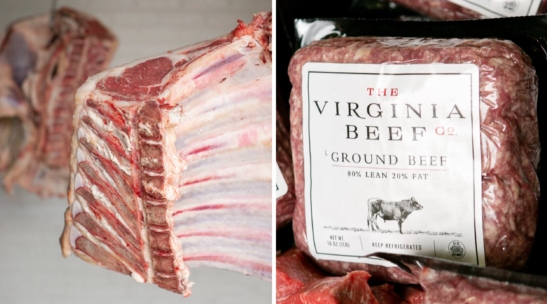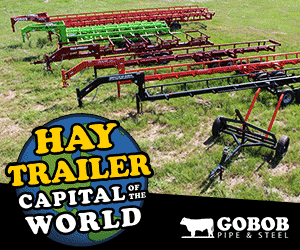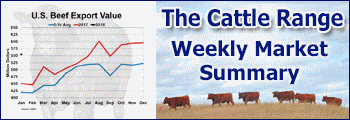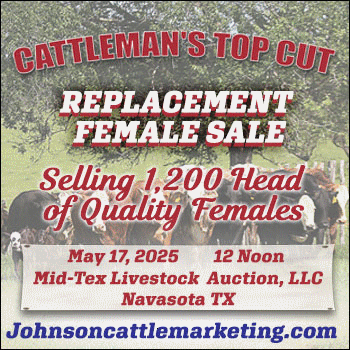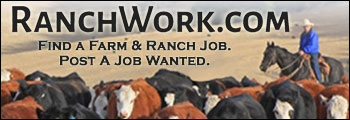Source: Modern Farmer
Dalton Mosser and a trio of workers hustle to hand-truck boxes filled with a few thousand pounds of freshly packaged ground beef through a loading bay into a refrigerated box truck. The 30-year-old president of operations wears newish jeans, a tucked-in button-up shirt and old work boots snagged from his office closet—and was supposed to be in a morning meeting.
“In this business, you have to wear a lot of hats and be ready to jump in when and where you’re needed,” says Mosser, a principal at Seven Hills Food, an independently owned, USDA-inspected meat-processing and packaging plant in downtown Lynchburg, Virginia.
The company processes about 150 cattle per week and partnered with dozens of area cattle farmers to launch a state-branded line of grass-fed beef, Virginia Beef Co., in 2018. It got an early shot in the arm when the nation’s second-largest retail grocery chain agreed to pilot flagship hamburger blends at a handful of local stores. Rave customer reviews and pandemic-related beef shortages fueled rapid expansion: The truck Mosser is helping load will deliver meat to about 100 Kroger Company stores in Virginia, West Virginia and Tennessee.
That means customers can walk into their local grocery store and buy grass-fed, regionally sourced ground beef—and for about 20 cents cheaper per pound than the current national average.
Experts call both the relationship and option rare exceptions.
“It’s rare to see [regionally sourced meats] on shelves at large chains, even at the local level,” says Rebecca Thistlethwaite, director of the Niche Meat Processor Assistance Network (NMPAN), a nonprofit that helps support small processors with marketing, applying for state and federal grants and more. Most ground beef consumed in the US travels hundreds, if not thousands of miles before it hits grocery shelves—Kroger’s organic Simple Truth line, for instance, is raised and slaughtered entirely in Uruguay.
That, says Thistlethwaite, is due to extreme consolidation in the $67-billion US beef industry.
Market share for the country’s four biggest meat-packing companies—Tyson, JBS, Cargill and Marfrig—has skyrocketed to 85 percent today from 25 percent in 1977. The Big Four, as they’re commonly known, now have plants that can process more than 5,000 head of cattle a day. And of those, a dozen accounted for nearly half the total US beef supply in 2022.
“These companies are so big, they play by economic rules that don’t apply to other processors,” says Thistlethwaite.
Automated equipment saves time and maximizes output while slashing labor costs. Fewer plants and minimal competition lowers prices paid to ranchers for cattle. Cornered supply chains create advantages when negotiating contracts with prisons, school systems and mega-retailers such as Walmart.
Unable to compete, more than half of the country’s small and midsize processors have shuttered operations in the past 20 years alone.
“At this point, [the Big Four have] surpassed any efficiencies associated with economies of scale,” says Thistlethwaite. Now, the focus appears to be on manipulating the marketplace.
The Department of Justice launched an ongoing price-fixing investigation into the Big Four in 2020. It has since faced an onslaught of civil suits and most—like JBS’s $52.5-million, 2022 agreement with Minnesota grocery stores and wholesalers—have resulted in large settlements. A group of small Illinois distributors filed a similar suit this past October, claiming the companies “exploited their market power … by conspiring to limit the supply of beef sold to purchasers in the US wholesale market” from 2015 through at least 2021.
The Four argue that supply and demand factors, not anticompetitive behavior, determine the price of beef and cattle. But the White House and Congress seem to agree with the plaintiffs.
The USDA implemented the first phase of efforts to crack down on anticompetition in November. The measures come in addition to a 2022 executive order allotting $1 billion in American Rescue Plan funds to help independent processors expand capacity.
“When dominant middlemen control so much of the supply chain,” reads a related White House update, “they can increase their own profits at the expense of both farmers—who make less—and consumers—who pay more.”
The announcement cited Federal Reserve stats showing the inflation-adjusted cost of ground beef rose by about 30 percent since the early 1980s and reached record highs in 2021. While ranchers’ share of consumer dollars spent on beef has fallen by more than a third since 1973, the Big Four have seen soaring profits—especially since the pandemic.
Consolidation also puts the nation’s food supply at risk.
For instance, COVID-19 infections led to shutdowns at major plants, disrupting supply chains and fueling shortages that helped Seven Hills, the Lynchburg processor, nab its deal with Kroger. Cyberattacks closed JBS plants in 2021, putting 20 percent of US processing capacity on hold.
Seven Hills Food is an independently owned, USDA-inspected meat-processing and packaging plant based in Lynchburg, Virginia. (Photo courtesy Seven Hills)
About $450 million in federal grants has been distributed so far. Como, Mississippi’s Home Place Pastures was among the recipients and received $500,000 to increase cold storage and processing capacity.
“It’s been a gamechanger,” says owner Marshall Bartlett. But the grants only cover 20 percent of project costs and having to borrow $2 million in match-funding “is what’s keeping me up at night,” he says.
Bartlett started sustainably raising pigs on a portion of his family’s 1,800-acre, fifth-generation row crop farm in 2014. Frustrations around securing reliable USDA-inspected processing and packaging inspired him to build a small plant two years later.
“I’d gotten some orders from Memphis chefs, but the closest slaughterhouse was booked for months,” says Bartlett. Even then, he says, “I had to drop off my animals, wait a few days, come back and pick up the carcasses, drive them 50 miles to the nearest butcher shop for processing, then convince them to let me use [their co-op room] for packaging. It was insane.”
The plant, which was partly funded by state grants, brought dramatic expansion. Bartlett went from raising 15 to about 600 pigs and has added around 200 head of cattle. Home Place does custom processing and labeling for dozens of small area farms and partners with 11 on a direct-to-consumer line of meats. It now has 30 full-time employees and processes about 1,500 pigs and 500 cattle per year in addition to sheep and goats. There’s also an onsite butcher shop, farm store and restaurant.
Bartlett says business is thriving and plans to continue to scale up over the next decade. But he doesn’t see chain grocery stores as part of the plan.
Without major legislative changes, “processors like us will never be able to compete at that level,” says Bartlett. Looking to the future, his focus is on educating more consumers about the benefits of eating locally raised sustainable meat and finding innovative ways to bring in more direct sales.
“This is a niche market,” says Bartlett. “Realistically, if we can pick up even a fraction of the regional market share, that would be a huge win.”
Mosser, the Seven Hills president, has applied for millions in USDA grants. He says a $500,000 infusion could outfit the company with equipment that would easily increase processing capacity to 500 cattle a week. With double that amount, he could ramp up to more than 1,000. Over time, profits from the expanded capacity could be reinvested in sister plants and establishing Virginia Beef type product lines in neighboring states. From there, he could branch out to poultry, pork, bison and lamb.
“That would go a long way toward creating an affordable and sustainable regional food system,” says Mosser. “What’s so frustrating is that the demand is there and we’ve proven we have a [competitive model]. All we need is a little help to get us to that next level.”
He worries that too much government money will go to boutiques and startups versus proven midsize plants that could cumulatively impact competition and keep more locally raised meat in regional food systems. Thistlethwaite, the NMPAN director, partly shares his concerns.
“I do worry we’re going to see a lot of these new plants fail over the next few years,” she says. Seventeen have or are being built in Montana alone. “This is a tough business to break into. If you don’t have those end consumers lined up, you’re not going to make it.”
Thistlethwaite says that small and midsize processing capacity should be expanded at all levels and that the government needs to do more to prop up plants. Legislation and stronger antitrust regulations can help redistribute market share. Institutions such as schools, prisons, hospitals, universities and government agencies can provide readymade customers.
“Look, this is an immensely complex problem,” she says. It took decades for consolidation to occur and “unfortunately, there is no magic bullet that’s going to fix it overnight.”
